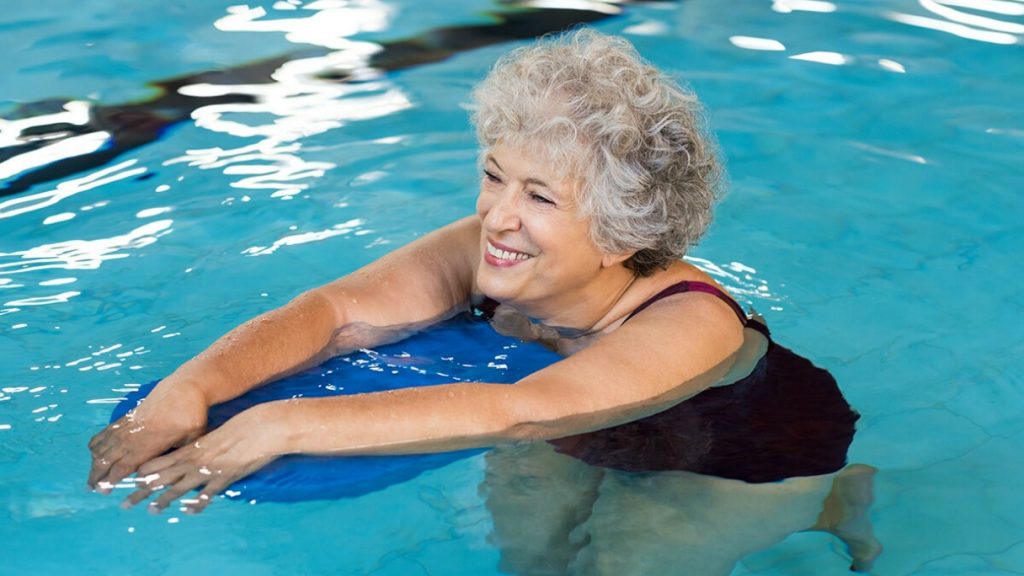
photo by Adobe Stock
By Kristen Sturt | Next Avenue
(This article originally appeared on Grandparents.com.)
Odds are you know an older adult who’s fallen at home. Perhaps the person ended up with a few bruises, or maybe injuries and a trip to the hospital with a dislocated shoulder, broken hip or worse. It’s possibly happened to you.
You’re not alone. According to the National Institutes of Health (NIH), one-third of Americans age 65 and older fall each year. Of that group, more than 1.6 million end up in the emergency room. “Among older adults,” the NIH says, “falls are the No. 1 cause of fractures, hospital admissions for trauma, loss of independence and injury deaths.”
Tumbles frequently occur for environmental reasons like clutter or slippery floors. But they’re also likely to result from bodily factors ranging from poor eyesight to low blood pressure to, significantly, problems with balance and strength, which worsen as we age. And while any exercise can alleviate these physical issues, new research shows that one activity could be particularly helpful to older adults in terms of averting spills: swimming.
The Evidence Behind Swimming Averting Falls
A 2014 University of Western Sydney study of 1,667 Australian men age 70 and older showed that swimmers had “significantly lower risks of falling,” meaning they took 33 percent fewer nosedives than other participants, including runners and golfers. What’s more, researchers found that swimmers had less “postural sway” — they wavered less than other men when tested in a standing position, indicating better balance.
The results indicate that swimming and a lack of falls are linked, but they don’t prove that swimming directly prevents falls. Still, aquatic therapists and swim teachers find there’s a noticeable difference in clients who swim, even when they do actually trip.
“Most of my clients, if they have a fall, usually don’t break anything. They get bruised, yes, but they don’t break anything,” said Cheryl Clark, therapeutic aquatic coordinator at Sibley Memorial Hospital in Washington, D.C., part of the Johns Hopkins group.
How Swimming Offers Health Benefits
It’s long been known that swimming has a multitude of health benefits for older adults. Research shows it can improve cognitive ability, lower blood pressure and enhance hand-eye coordination.
Doing a few laps has even been said to prolong life. One 2008 NIH-sponsored analysis of more than 40,000 men showed swimmers had lower mortality rates than non-exercisers, walkers and joggers.
“In addition to the physical well-being, our mental health will be positively influenced due to increased brain circulation and relaxation,” said Diane Platz, vice president of the Aquatic Section of the American Physical Therapy Association. Until the Australian experiment, however, no significant study had compared swimming with other activities for avoiding falls.
“The really nice thing about exercising in the water is that it works all muscles of the core, arms and legs, depending on how you move in the water and how deep you are submerged,” said Platz. “Aquatic exercises will increase flexibility of our joints as well as the strength and endurance of our muscles.” That comprehensive workout is what improves your stability, perhaps more so than running, walking or golfing.
This is especially good news for older adults with shoulder, knee and hip problems. “Swimming allows flexibility of the hips. You get the flexion (bending at joints) and extension,” said Clark. “Most people over 65 tend to lose that core ability.”
Swimming may make more sense for older people than other workouts, as well. “It’s safe for you,” said Jane Katz, a former Olympic swimmer, founder of GlobalAquatics.com and professor of health and physical education at John Jay College in New York. “The water slows your change of pace very significantly, and you can easily right yourself [if you lose your balance],” she said. “It’s something you can do for a lifetime, and that isn’t always the case with other sports.”
Training in the water alleviates joint pressure — especially on the knees — and can soothe back pain, conditions that can be exacerbated by more intense, land-based workouts.
“It’s something you can do with your entire family,” Katz said. “The grandkids will always want to see you and go swimming with you.”
Start Swimming Now
To get started swimming, Katz suggests first finding a venue. “The YMCA is always going to have water exercise,” she said. “There are many parks departments that have aquatics programs. Some people may have a home pool, and if they’re lucky enough, [the resources] to support a private teacher.”
Once you’re situated you can take a class or create your own regimen, every part of which can take place in the water. “The important thing is to do a warm-up (walking, stretching), a main set of exercises (tai chi, yoga) and then finish with a cool-down. It should take a half-hour or so.” Katz’s book, Your Water Workout, includes quite a few workout ideas. Of course, “Have a medical check, no matter what, before you start.”
Finally, to truly improve your balance, swimming should be part of an overall physical fitness plan. “It is important to understand that the forces in the water are different from those on land,” said Platz. “One should incorporate land-based exercises in addition to water-based exercises when the goal is to improve balance on land.”
Whatever you decide, it pays to begin swimming post haste because, as Platz said, “Horizontal and vertical aquatic exercise is healthy, fun and can keep you young.”
![]() This article originally appeared on Next Avenue
This article originally appeared on Next Avenue
© Twin Cities Public Television - 2018. All rights reserved.
Read Next



